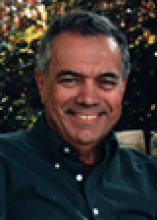
IEEE Senior Member
2017-2018 Distinguished Lecturer
University of Colorado, Physics Department
Abstract: NIST’s Communications Technology Laboratory and its Public Safety Communications Research Division is leading a first-of-its-kind nationwide cell phone network that will enable improved interoperable broadband communications and new functionalities. As this network becomes a reality, public safety stakeholders have set unprecedented metrics for location-based services as one of its primary goals. This presentation will provide an overview of these criteria for 3-D indoor localization (vertical and horizontal local positioning) necessary for servicing large numbers of first responders in emergencies that have especially challenging, unique operations in a dense, urban environment. Cell phone modulation protocols and 4G LTE standards use RF spectra that does not include precise 3-D positioning at this time but is primarily focused on spectrum-shared, robust communications. Howe will discuss PNT research that directs 5G LTE formats and RF modulation protocols that potentially achieve an unprecedented 0.1m 3-D uncertainty. In combination with magnetometers and accelerometers, realtime position and velocity dynamics is possible without interruption. Lastly, he will present the significant benefits of small, low-phase noise atomic oscillators that can be introduced into future cell phone networks to detect and eliminate RF multipath and obtain high precision 3-D RF localization and improved data capacity.
Bio: David A. Howe is a research advisor to the Time and Frequency Division of the National Institute of Standards and Technology (NIST) and the Department of Physics at the University of Colorado, Boulder. His expertise includes advanced clock synchronization, time-series analysis, automated accuracy evaluation of primary cesium standards, reduction of oscillator acceleration sensitivity and precision spectral analysis. He worked with David Wineland from 1973 to 1987 doing advanced research on NIST’s primary cesium standard and compact hydrogen and ammonia standards. He developed and built the first operating compact hydrogen masers in 1979 and led and implemented global high-accuracy satellite-based time-synchronization among national laboratories in the maintenance of Universal Coordinated Time (UTC).
Share
Upcoming Events
-
MSE 298 Seminar: Mechano-Electrochemical Phenomena at Ceramic Electrolyte Interfaces
-
CBE 298 Seminar: Beyond the Tailpipe - From the Science of Soot Formation to the Engineering of Carbon Nanomaterials
-
MSE 298 Seminar: Innovation In Materials Science - An Industrial R&D Perspective
-
MSE 298 Seminar: Understanding the Impact of Grain Boundary Inclination on Grain Growth Using Modeling and Simulation and Experiments
-
EECS Seminar: Mixed Conductors for Bioelectronics
